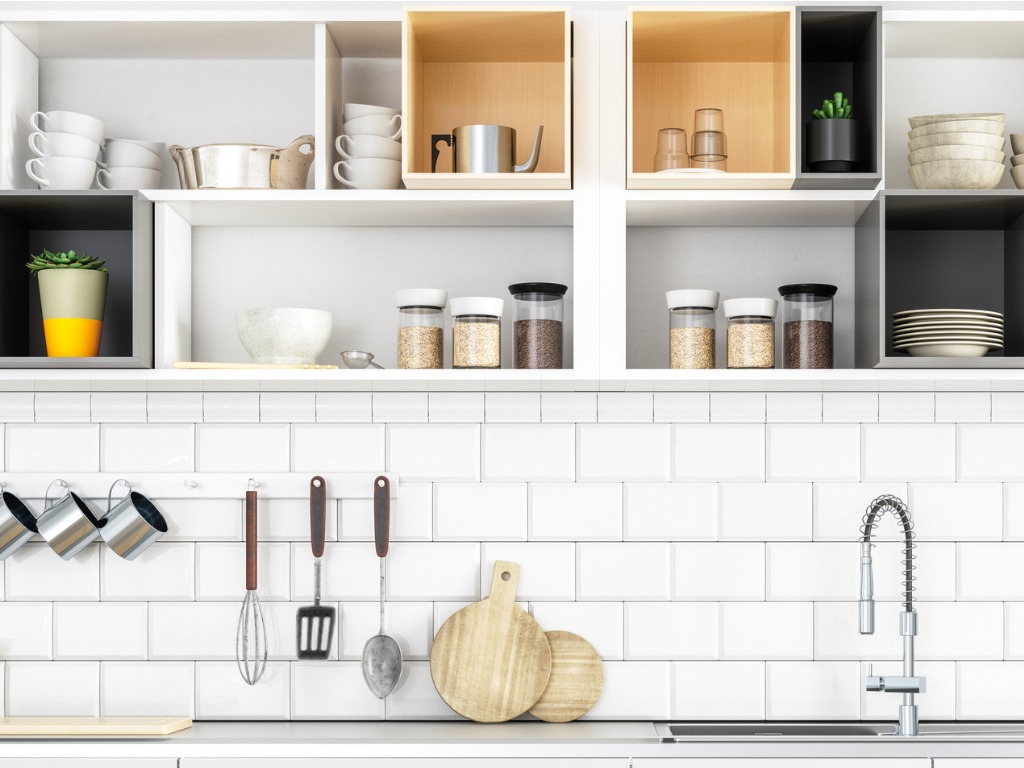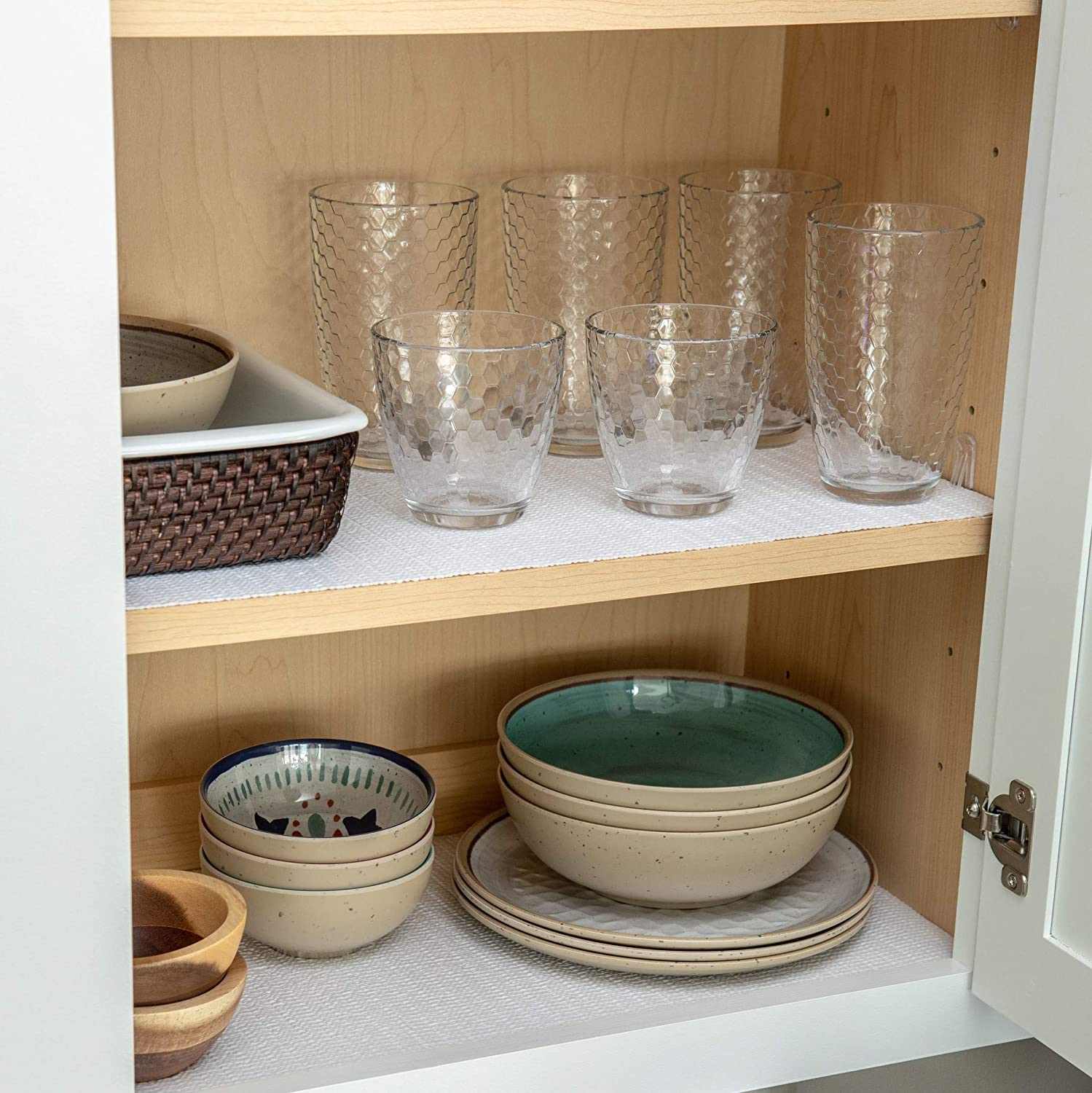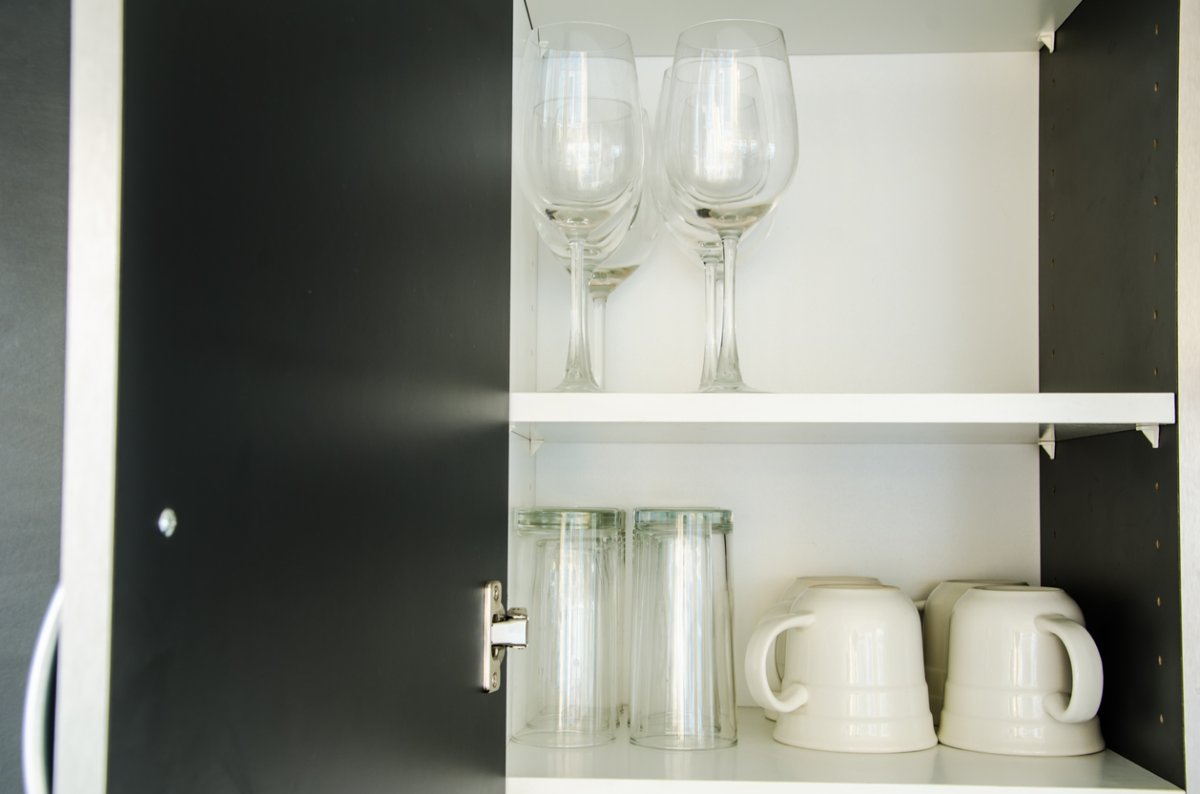We may earn revenue from the products available on this page and participate in affiliate programs. Learn More ›
Q. I’ve just spent the weekend at my aunt and uncle’s house and noticed that they store all of their drinking glassware—coffee mugs, water glasses, wineglasses, and everything—upside down in the cabinet. When I asked my aunt about it, she said that she doesn’t want the inside of the glass to collect dust, which it would if glasses were stored right side up. I have always been taught to store drinkware right side up so as not to dirty the rim of the glasses. Who’s right?
A: When you make your bed, which way does the top sheet face? (Do you even use a flat sheet at all?) How does your toilet paper unfurl—over or under? Did the very first chicken come from the very first egg, or vice versa? Should you store glassware with the rim up or or the rim down?
There are some debates that may never be settled. Nevertheless, we’re taking a crack at that last one: how to store your mugs, glasses, and cups so they remain as clean as possible.
Team Upside Down says that dust can collect inside right-side-up glasses.

These folks argue that turning the glasses rim down will prevent dust and other debris from settling inside, keeping the interior pristine. This point is especially well taken when glasses are stored on open shelves, where more particulate matter is probably present in the air.
Team Right Side Up thinks rims pick up germs when glasses are stored upside down.
To the Right Side Uppers, it makes more sense to place glasses on a shelf the same way you use them, ready to be grabbed and filled with your favorite beverage. Their other argument? A drinking vessel’s rim can pick up germs from the surface of the shelf and then transfer them directly to the drinker’s mouth. (Ew.)
Another important consideration: The type of vessel from which you’re drinking.
There’s a world of difference between, say, a shatterproof plastic tumbler or titanium camping mug and a delicate crystal Champagne flute or heirloom china teacup.
Generally speaking, a glass’s rim is its most fragile area and where cracks or chips are most likely to originate. These faults can be difficult to detect, so it’s wise to stay on the safe side and store delicate glasses right side up.
“Stemmed glasses should always be placed on their base; otherwise, their thin rims would bear all the weight,” explains Steven E. DeMartino, Ph.D., technology director of Mechanics and Reliability Sciences at glass-industry giant Corning Inc. “If the rim of a glass gets nicked, it has a greater potential for crack propagation, so placing glasses upside down when there’s a defect or crack on the rim can potentially drive any defect deeper into the glass, simply from its own weight.”
Most everyday drinking vessels, however, are made from plastic or thick glass; they won’t need special treatment to prevent them from breaking midpour or midsip (and consequently subjecting your rug to a sudden flood of merlot).
Why not compromise?

You can safeguard your breakable and/or irreplaceable drinkware in a couple of ways: Use a stemware rack that holds glasses by their base. Store the more fragile flutes, cordials, or coupes, which are usually the ones you use least, on a higher shelf, in a dining room hutch, or even in their original protective packaging.
There’s a shelf liner to suit every need.
Shelf liners are an excellent compromise as well, and there’s one to suit every situation. Some are smooth and easy to wipe clean. Others are softer or grippy to protect delicate items and hold them in place. Additionally, shelf liners come in adhesive and nonadhesive styles and are available in precut, perforated, or cut-to-size formats for perfect customization.

Team Right Side Up should opt for closed cabinets (or drink a different way).
If you enjoy the convenience of taking your cups and glasses right off the shelf without any extra flipping or fussing, store them in cupboards with doors. You could also try reducing the number of glasses in use; high turnover can prevent dust from accumulating. When glasses do get dirty, you can just rinse them out as needed. For an eco-friendly alternative, switch to insulated tumblers with lids and keep a set of reusable straws.
Team Upside Down should store stemware elsewhere—and get shelf liners.
Can’t shake your germaphobe habits? Go ahead and flip your cups, but first line the shelves so they can be easily (and frequently) wiped clean. Consider a hanging rack for workaday stemmed wine or martini glasses, and find another storage solution altogether for valuable or delicate stemware.

